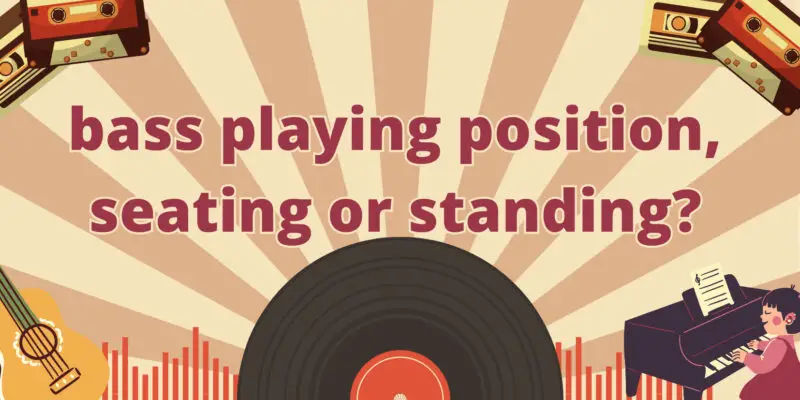As a bassist, one of the decisions you’ll need to make is whether to play your instrument while sitting or standing. Both approaches have their advantages and can affect your playing style, comfort, and stage presence. In this article, we’ll explore the pros and cons of playing bass while sitting and standing to help you decide which method suits your preferences and musical goals.
Playing Bass While Sitting:
Pros:
- Comfort: Playing bass while sitting can be more comfortable for extended practice sessions or performances. It allows you to support the weight of the instrument and maintain a relaxed posture.
- Stability: Sitting provides a stable and grounded foundation for your playing. It can help reduce fatigue and allow you to focus on your technique and groove.
- Precise Fingerwork: For bassists who use their fingers (fingerstyle) to pluck the strings, sitting can facilitate precise fingerwork and note articulation.
- Ease of Learning: Many beginners find it easier to start playing bass while sitting, as it allows them to concentrate on fingering and hand coordination without the added complexity of standing.
Cons:
- Limited Stage Presence: If you’re performing live, playing bass while sitting can limit your stage presence. It may not be as visually engaging for the audience as playing while standing.
- Less Mobility: Sitting can restrict your mobility on stage, making it challenging to move around or interact with other band members.
Playing Bass While Standing:
Pros:
- Stage Presence: Playing bass while standing allows you to engage more with your audience and bandmates. It adds a dynamic visual element to your performance.
- Mobility: Standing provides greater mobility, enabling you to move around the stage freely. This can enhance your interaction with the audience and contribute to the overall energy of the performance.
- Live Performance Feel: For many bassists, standing while playing adds a sense of excitement and immersion in a live performance environment.
Cons:
- Physical Strain: Standing for extended periods can be physically demanding, especially if you’re holding a heavy bass guitar. It may lead to fatigue, discomfort, or back strain if proper posture is not maintained.
- Less Stability: Maintaining stability while standing can be more challenging, especially for beginners. It may require additional practice to achieve balance and control.
- Precision Challenges: Some bassists find that standing can impact the precision of their playing, particularly if they’re accustomed to the stability of sitting.
Conclusion:
The choice between playing bass while sitting or standing ultimately depends on your personal preferences, musical goals, and physical comfort. Many bassists find a balance between the two, opting to sit during practice and stand during performances for a combination of comfort and stage presence.
Regardless of your choice, it’s crucial to pay attention to proper posture and ergonomics to prevent discomfort or injury. Experiment with both sitting and standing to determine which approach allows you to groove, connect with your audience, and enjoy your bass playing to the fullest. Ultimately, the “right” way to play bass is the one that enables you to express yourself and create the music you love.


